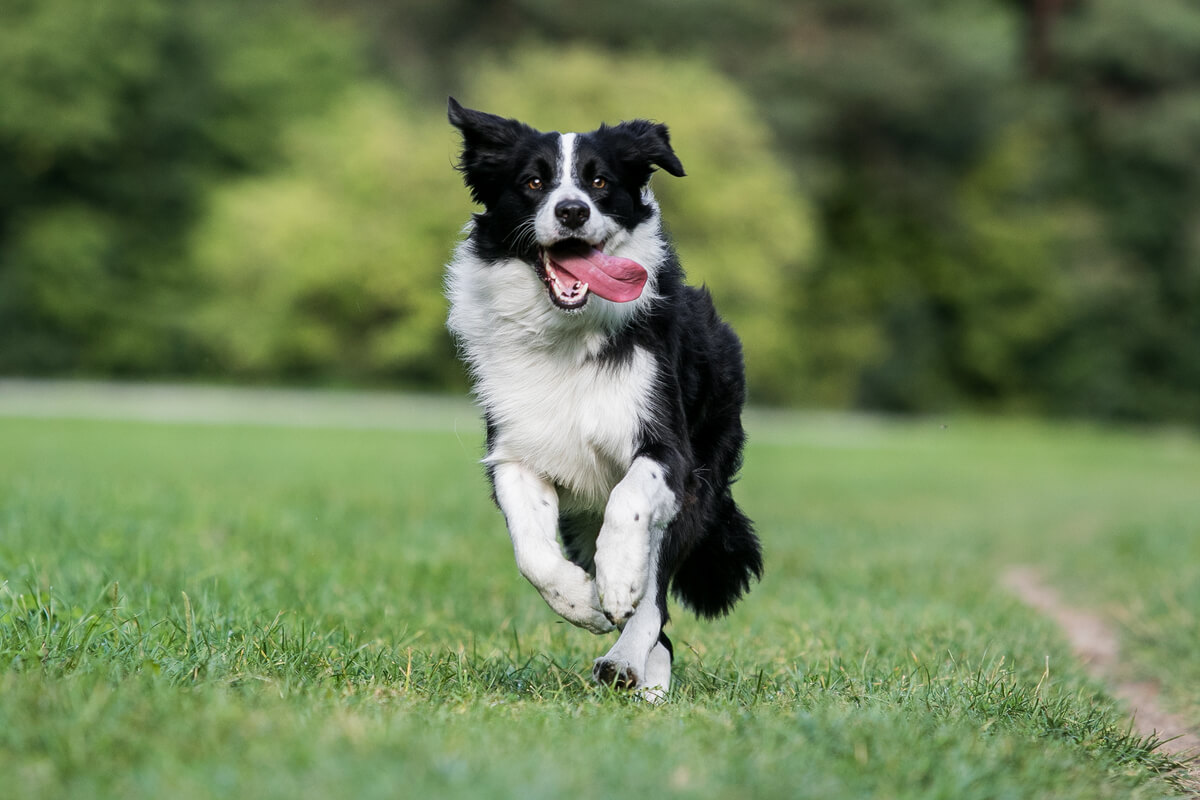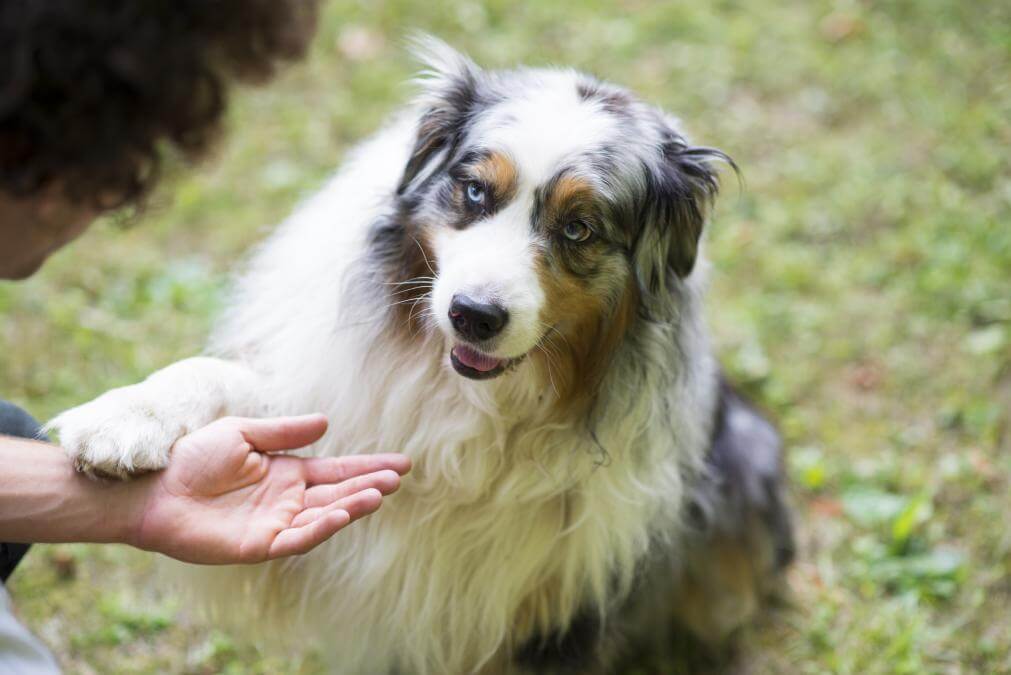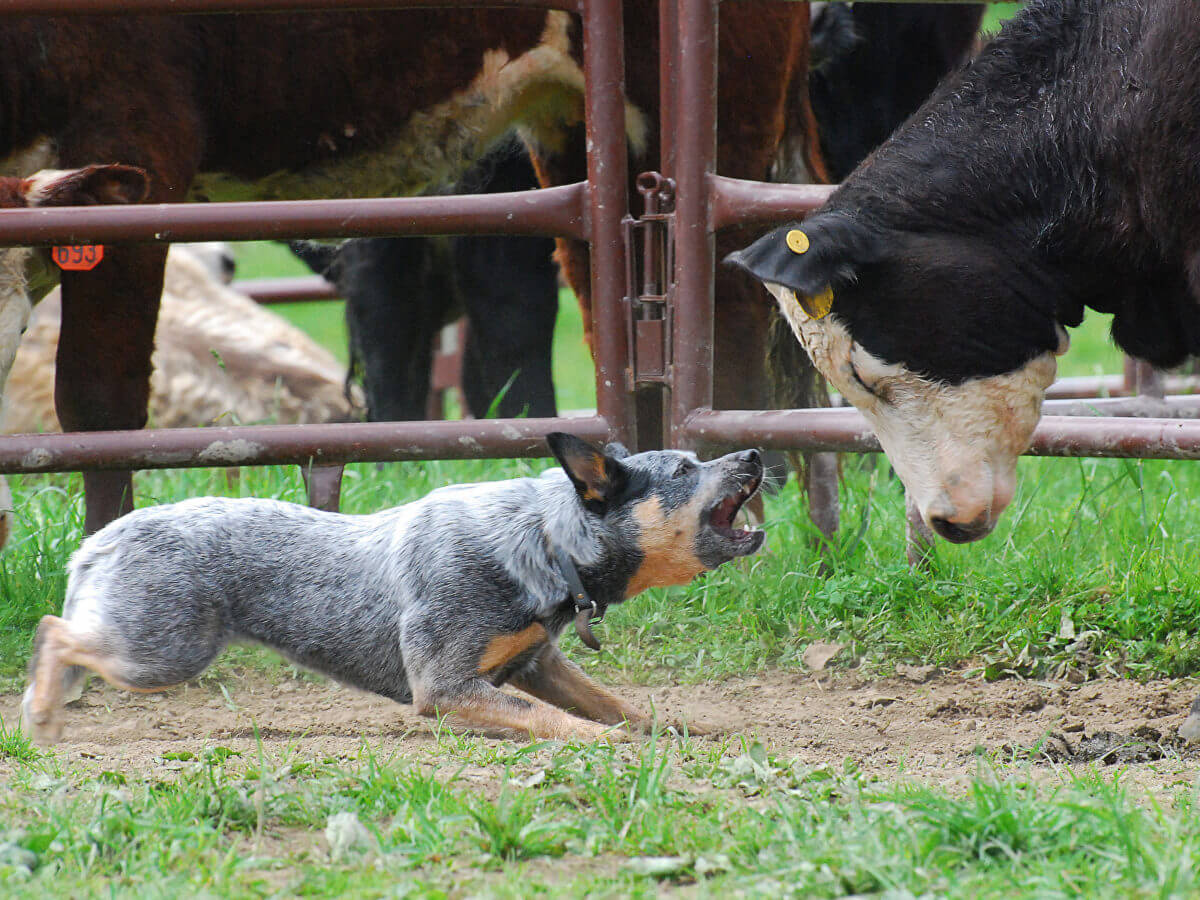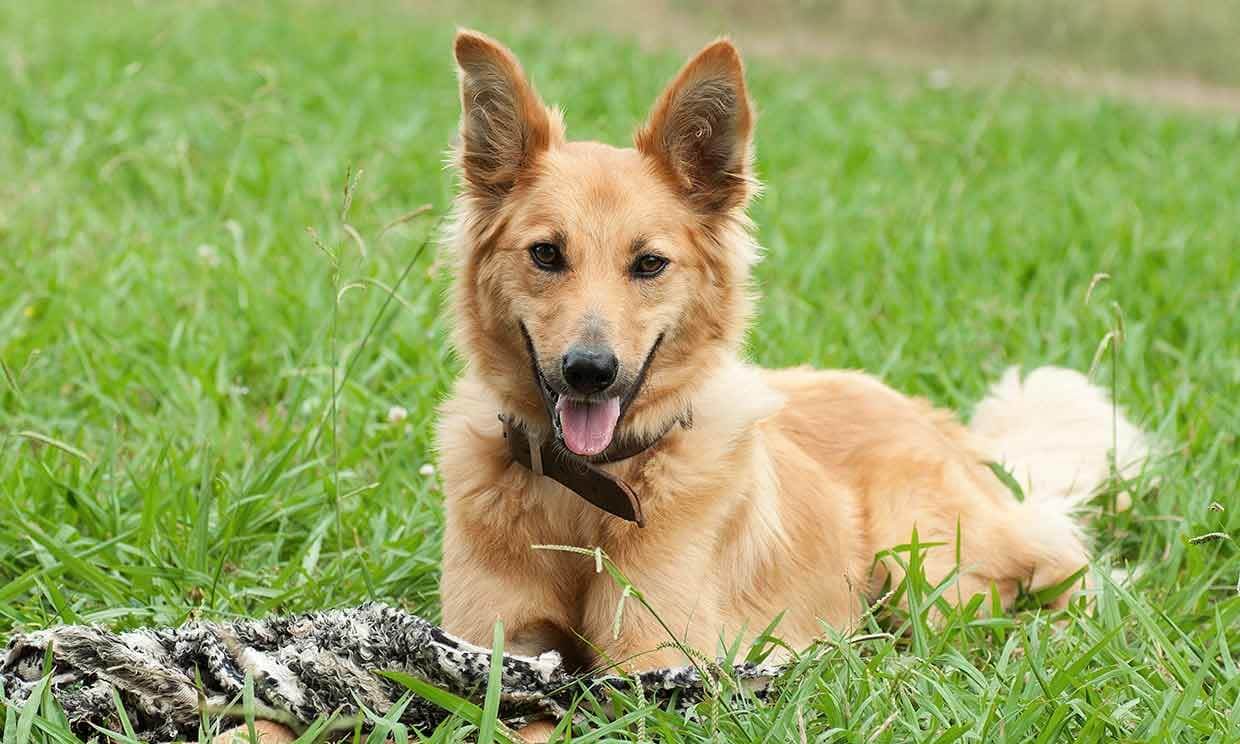Top 11 Sheepdog Breeds

If we are talking about shepherding, dogs are perhaps the animal species with the best performance in this task, even above humans. According to the Fédération Cynologique Internationale (FCI) and the American Kennel Club, there are currently more than 60 sheepdog breeds around the world, each with exceptional abilities.
Although they’re mainly working dogs, many people around the world have chosen to have sheepdogs as pets. If this is your case, you’ll know that these bold and energetic animals need time, space, and attention to maintain proper mental and physical well-being. If not, we invite you to get to know the main sheepdog breeds that exist, and maybe you will discover one that fits what you’re looking for.
11 top sheepdog breeds
1. Border collie

Here’s the first of our top sheepdog breeds. Considered the most intelligent dog on the planet, the border collie is undoubtedly the most popular sheepdog breed in existence. With an average weight of 15 kilograms (33 pounds) and an approximate size of 50 centimeters (20 inches), this animal stands out for its great agility, speed, and cunning during herding work.
Originally from the United Kingdom, it was developed especially to control the flocks of sheep in that country. However, it has also been successfully used for looking after other farm animals, such as cows.
Despite having a good temperament and an outstanding learning ability, it isn’t recommended as a companion animal for those who have little time and space. As it has a lot of energy, if it isn’t constantly active, it can develop behavioral problems.
2. Australian Shepherd
Although their name indicates otherwise, these dogs are actually originally from the United States. However, it was in the southern country where they were used to a greater extent for the care and management of sheep flocks.
With an average size of 50 centimeters (20 inches) and weighing between 20 and 26 kilograms (44 to 57 pounds), Australian shepherds have also been used to control other types of animals such as buffaloes, ducks, and even rabbits.
Due to their affable character and great capacity for socialization, they’re ideal for families with children at home. However, it’s important to point out that they also need a lot of physical activity and mental stimulation.

3. German Shepherd
Recognized mainly for being used in the police forces, the German Shepherd was originally used by Bavarian shepherds for the care of their livestock. It has a very good performance as a guard dog, in addition to having a well-developed sense of smell. Currently, there are about 4 variations of the breed, all with an average size of 60 centimeters (23 inches) and weighing between 20 to 40 kilograms (44 to 88 pounds)
It’s an excellent companion animal for its calm and protective character. As for herding work, it isn’t recommended for the care of feathered animals, as it can attack them.
4. Belgian Shepherd
Developed in Belgium in 1981, there are currently four varieties recognized by the FCI; the Malinois, the Groendael, the Lakenois and the Tervuerense. They stand out mainly for their great receptiveness to training, as well as being quite energetic and resistant. In fact, these sheepdogs, like the German shepherd, are used as service dogs by the military and police forces in different countries.
On the other hand, their tasks in the pasture include the care and guidance of herds of sheep, cows, and buffaloes. They also behave very well as pets, as they have a balanced and affectionate temperament.
5. Carpathian Shepherd Dog
Originally from Romania, it’s a little-known sheepdog but widely used for herding in different European countries. It has a great physical ability and a rather temperate and protective character. It’s mainly used on sheep farms for the care and management of the animals. In adulthood, they weigh between 35 and 50 kilograms (77 to 110 pounds), and require a lot of space for recreation.
In popular culture, stories are told that the Carpathian shepherd dog is capable of confronting a bear in order to defend its flock. In the same way, it’s protective and loyal to its human family.
6. Caucasian Shepherd Dog
Perhaps one of the largest sheepdogs in existence, these dogs can reach up to 70 centimeters (27 inches) in height and 50 kilograms (110 pounds) in weight. Originally from Eastern Europe, this sheepdog is very popular on farms in countries such as Russia, Azerbaijan, Armenia, and Georgia. An excellent protector of its herd and family, the Caucasian shepherd dog can be aggressive towards any invader of what it considers to be its property.
7. Australian Cattle Dog
Resulting from a cross between several breeds of domestic dogs and the wild canine known as the dingo, this sheepdog has acquired a certain notoriety in the homes of millions of people in recent years.
Its origin goes back to Australia, where the sheepdogs of the past didn’t work adequately for livestock work. For this reason, several farmers decided to cross these animal species, developing this new breed.
It stands out mainly for its coat, which has blue, black, reddish and white shades. In adulthood, they reach approximately 50 centimeters (20 inches), while their weight can reach 16 kilograms (35 pounds) in normal conditions. It’s one of the most popular sheepdogs, and because of its good temperament and medium size, it fits perfectly in any family.

8. Swiss Mountain Dog
Related to the large St. Bernard, these sheepdogs are originally from the Swiss Alps, where they’re used to look after cattle. They reach large dimensions in adulthood, since a specimen can reach 70 kilograms (154 pounds) in weight and 70 centimeters (27 inches) in height.
They have a very balanced temperament, although they require a lot of physical and mental stimulation to avoid the development of behavioral problems.
9. Majorcan Shepherd Dog
Originally from Spain, specifically from the Balearic Islands in Mallorca, this sheepdog breed is used to handle sheep, cows, pigs, and even horses. Due to its physical build, it’s ideal for daily farm work, as it reaches 50 kilograms (110 pounds) in weight and 75 centimeters (nearly 30 inches) in height.
It’s characterized by its completely black color, besides being an animal that performs well as a guard dog in families. Its temperament is affable and calm, although it won’t hesitate to attack any invader.
10. Catalan Sheepdog
Like the Mallorcan, this breed is of Spanish descent. It’s characterized by an abundant and smooth coat, with brown, black and reddish tones. It is of medium size, reaching 50 centimeters (20 inches) in height and weighs 20 kilograms (44 pounds).
Being docile, bold and obedient, it’s mainly used for the care and management of flocks of sheep. Likewise, it behaves very well as a companion animal, as it isn’t usually aggressive with people.
11. Basque Shepherd Dog
Developed in the territory of the Basque country in Spain, this type of sheepdog stands out for its great intelligence, obedience, and learning ability. It’s used for herding sheep and cows, although it’s also very popular as a companion animal. It is a medium-sized dog that reaches 18 kilograms (39 pounds) in weight and 60 centimeters (23 inches) in height.

In spite of having been developed for field work, sheepdogs have progressively taken over the homes of millions of people around the world. And, as we have seen from all these sheepdog breeds, they’re supremely intelligent, loyal and protective animals.
If you still don’t have a pet at home, a sheepdog will always be an excellent choice to be your companion. Remember, however, to give them all the time and space they need, otherwise, coexistence will become difficult.
All cited sources were thoroughly reviewed by our team to ensure their quality, reliability, currency, and validity. The bibliography of this article was considered reliable and of academic or scientific accuracy.
- Autralian cattle dog. (2012, 5 de diciembre). Federación Cinológica Internacional. https://www.fci.be/en/nomenclature/AUSTRALIAN-CATTLE-DOG-287.html
- Hervella, M., San-Juan-Nó, A., Aldasoro-Zabala, A., Mariezkurrena, K., Altuna, J., & de-la-Rua, C. (2022). The domestic dog that lived∼ 17,000 years ago in the Lower Magdalenian of Erralla site (Basque Country): A radiometric and genetic analysis. Journal of Archaeological Science: Reports, 103706. https://www.sciencedirect.com/science/article/pii/S2352409X22003698?via=ihub
- Herding Group. (s.f.). American Kennel Club. Consultado el 1 de abril de 2023. https://www.akc.org/dog-breeds/herding/
- Ostermann, T., Nessler, J., Urankar, H., Bachmann, N., Fechler, C., Bathen-Nöthen, A., Tipold, A. (2022). Phenotype of Idiopathic Epilepsy in Great Swiss Mountain Dogs in Germany-A Retrospective Study. Front Vet Sci, 9, 921134. https://pubmed.ncbi.nlm.nih.gov/35903129/
- Pilley, J., Reid, A. (2011). Border collie comprehends object names as verbal referents. Behav Processes, 86(2), 184-195. https://pubmed.ncbi.nlm.nih.gov/21145379/
- Salvar al perro pastor vasco. (2020, 17 de diciembre). Noticias de la Universidad del País Vasco. https://www.ehu.eus/es/-/salvar-al-perro-pastor-vasco
- Sheepdogs and Cattledogs (except Swiss Cattledogs). (s.f.). Federación Cinológica Internacional. Consultado el 1 de abril de 2023. https://www.fci.be/en/nomenclature/AUSTRALIAN-CATTLE-DOG-287.html
- Taverna, G., Tidu, L., Grizzi, F., Torri, V., Mandressi, A., Sardella, P., Graziotti, P. (2015). Olfactory system of highly trained dogs detects prostate cancer in urine samples. J Urol, 193(4), 1382-1387. https://www.auajournals.org/doi/10.1016/j.juro.2014.09.099
- Włodarczyk, J. (2015). Of Dogs and Shepherds: Sheepdog Culture and the American Pastoral. American Studies in Scandinavia, 47, 61-84. https://www.researchgate.net/publication/287811786_Of_Dogs_and_Shepherds_Sheepdog_Culture_and_the_American_Pastoral
- Yilmaz, O., Şireli, D., & Ertuğrul, M. (2015). The Shepherd Dog Breeds in Turkey: A Survey. Research Opinions in Animal and Veterinary Sciences, 5, 172-177. https://www.researchgate.net/publication/275824006_The_Shepherd_Dog_Breeds_in_Turkey_A_Survey
This text is provided for informational purposes only and does not replace consultation with a professional. If in doubt, consult your specialist.